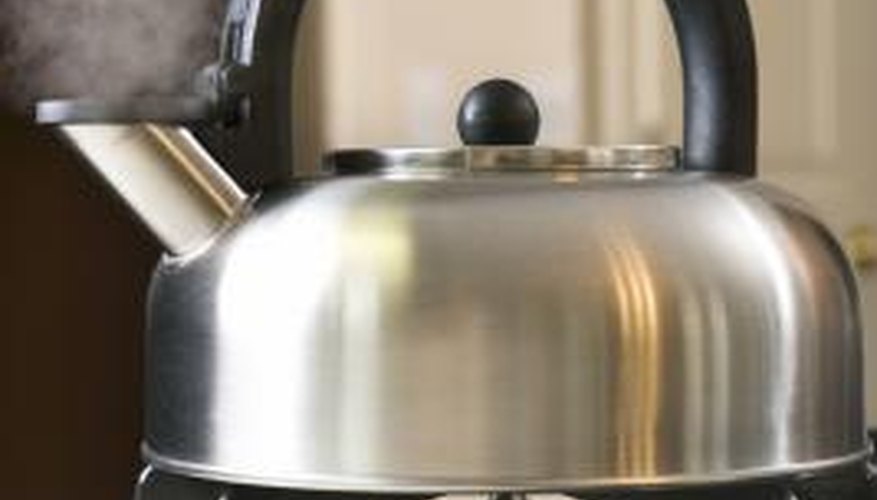Stainless steel is a useful material for the outside of a tea kettle because it naturally repels both stains and rust. It also does not transfer heat easily, which will prevent it from getting as hot as the inside and bottom of the kettle. Because of this characteristic, manufacturers make pans, pots and kettles that have iron or copper in the inside and stainless steel on the outside. Stainless steel is a relatively soft metal that can scratch easily if you use metal utensils or scouring pads for cleaning.
- Stainless steel is a useful material for the outside of a tea kettle because it naturally repels both stains and rust.
- It also does not transfer heat easily, which will prevent it from getting as hot as the inside and bottom of the kettle.
Add just enough water to 3 tbsp of baking soda to make a thick paste. Mix the paste until it is the consistency of toothpaste.
Apply the paste to the outside of the kettle. Rub along the metal's grain. Pay special attention to any stained areas of pieces of burnt foods.
Scrape burnt food with the back of a plastic spoon if the baking soda mixture did not completely remove the burnt food. Be careful not to scratch the kettle.
Slightly dampen a clean cloth in distilled white vinegar. Rub it on the surface of the kettle to remove the baking soda residue.
Buff the kettle dry with a clean, dry cloth. This will prevent any watermarks or streaks from drying onto the stainless steel surface.
